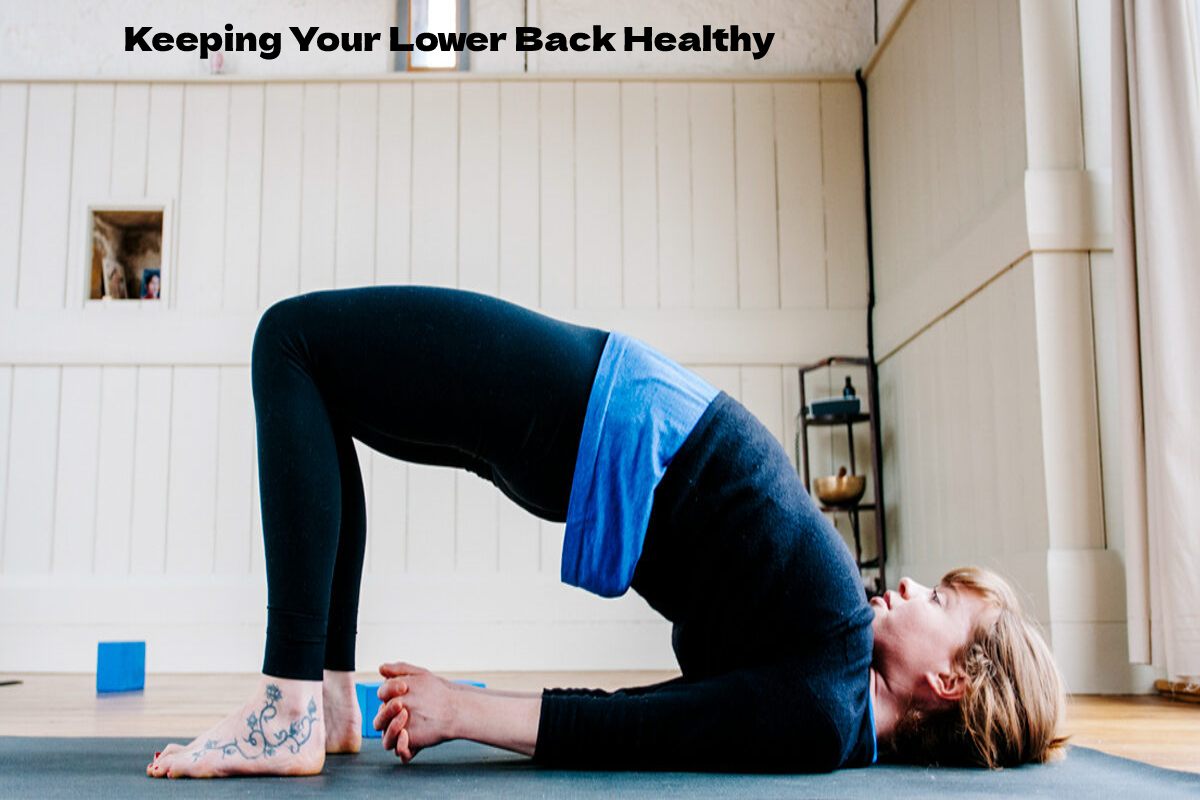Keeping Your Lower Back Healthy as You Age: It is common for people to experience back discomfort, and joint stiffness as they age. Most of us assume that this uneasiness is just part of the deal – but when it comes to the spine, you need to remember that a small decrease in activity is an obvious effect as the intervertebral discs get damaged over time.
However, there are several aspects you can really do right now to help to maintain the comfort and relaxation of your spine even into your glory days. You will explore what actually occurs to your spine as you age, prevalent spinal circumstances in older adults, as well as ways to help avoid future back pain and spine injuries.
As a result of the normal aging process, disc degeneration, as well as spinal canal narrowing, might very well occur.
The spine, just like every other portion of the body, is subordinate to daily stresses that ultimately degrade over time. As the moisture content of the discs that act as cushions between both the vertebrae of the spine decreases, they begin to shrink and wear down.
As a direct consequence, the vertebral bones start rubbing against each other, potentially causing spine pain and stiffness. In the meantime, the column that encloses and protects the spinal cord can confine over time, likely to result in spinal stenosis, a painful condition caused by compaction of the cord as well as spinal nerves.
In older individuals, prevalent spinal conditions can cause symptoms such as early hours back pain, leg pain even before standing or walking, loss of height, and much more.
For example, facet joint osteoarthritis is a type of spinal arthritis that evolves as the cartilage that separates the facet joints deteriorates over time. Lower back pain and stiffness are common symptoms of such a condition. This pain seems to get worse in the early hours and also at the end of each day, as well as after prolonged periods of physical activity.
Sciatica is a type of radiating leg pain caused by osteoarthritis. Pertinently, back and neck pain which occurs as a result of aging should indeed be treated – especially if it prevents you from just being active and then doing the things that make you happy.
Patients suffering from the aforementioned conditions can usually find significant relief from nonsurgical medical treatments.
But, if you are not able to find relief from such nonsurgical treatments you should consider surgery like TOPS by Premia Spine. The TOPS System is a dynamic and innovative implant that stabilizes the spine without requiring rigid spinal fixation.
Having followed decompression surgery, the TOPS is embedded at the disease-ridden level (typically L4-L5, L3-L4, or L2-L3) to relieve pain caused by spinal stenosis as well as degenerative spondylolisthesis.
Taking the necessary precautions now can prevent you from getting the above conditions and one‘s associated symptoms later in life.
Although not all back pain is avoidable, now is the time to begin protecting yourself against completely avoidable spine problems as you get older.
This begins with regular exercise to help you lose weight and enhance the core muscles in your back as well as abdomen. This can be accomplished through specific target stretches along with safe aerobic workouts such as walking, bicycling, swimming, as well as yoga.
Meanwhile, keep your body posture in mind all the time, particularly while sitting at your desk at work. Adjust your seat and laptop screen as needed, ensure you have appropriate lumbar support, as well as stretch and warm up your body before engaging in any physical exercise.
You should also avoid lifting heavy items by yourself anytime possible, and use proper bending, twisting, and lifting methods at all times. See below for more information on these and other methods you can use to reduce your chances of developing chronic back pain as you age:
- Help bolster your core muscles with specific exercises such as aerobics and flexion (bending forward) as well as extension (bending backward) stretches.
- By practicing proper posture as well as making ergonomic modifications to your workstation, you can avoid putting undue strain on your spine.
- Lifting objects weighing more than 25% of your body weight should be avoided.
- To maintain your bone strength, eat a well-balanced diet rich in anti-inflammatory foods but also vitamin D.
- Get the additional assistance you need to quit smoking if you are a smoker.
- If you already have back pain in the morning, consider investing in a better, more supportive mattress or experimenting with a new sleep pattern and reclined position.
- Seek advice from a spine specialist if you have severe back pain and understand the cause and finest possible treatment options while avoiding additional injury. Remember that recurring and incapacitating back pain is not ever normal, and it is treatable with the right care.
- Find ways to calm down, relax and lighten your neck and back muscle tissue at the final moment of each day if you are under a great deal of stress on a daily basis.
- Keep in mind that depression can play an important role in back pain, and seek help if necessary, such as counseling and relaxation techniques.
- Avoid going overboard with a repetitive motion that can cause muscle strains and soft tissue injuries.
- Rest, ice, compression, as well as elevation should be used to treat strains and sprains as quickly as possible, and you should see a doctor if your pain is recurring or lasts over two weeks.
- Consult your doctor about over-the-counter pain and inflammation medications.
Final Thoughts
In conclusion, every part of our body does get older with our age. Thus, you have to make sure you take care of yourself, especially your spinal cord.
Healthy living standards, consuming vegetables and fruits, appropriate sleep, working out regularly and minimal stress should be your daily routine to help you recover from any diseases.

